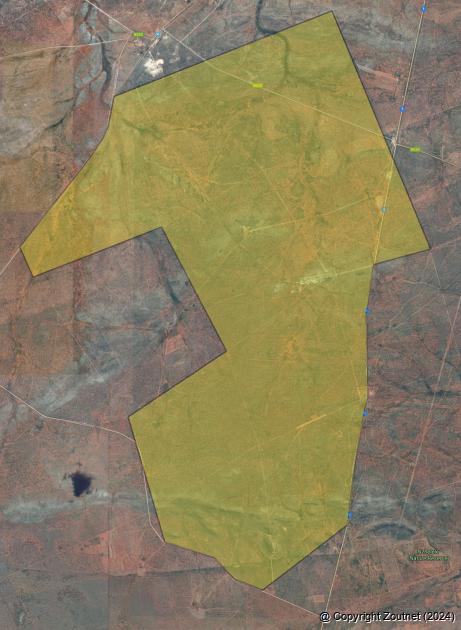The local business sector is eagerly waiting to find out how they can benefit from the Musina/Makhado SEZ (Special Economic Zone), but almost eight months after its official announcement, it seems that little, if anything, has transpired.
On 8 July last year, Cabinet approved the Makhado/Musina SEZ and a few days later the Minister of Trade and Industry, Rob Davies, announced that an investment of more than R40 billion was expected to be injected into the proposed SEZ for the establishment of an energy and metallurgical industrial park. “The industrial park will include the power, coking, ferrochrome, ferromanganese, ferrosilicon, pig iron metallurgy, lime, steel and stainless steel plants,” Davies said. Following this announcement, Shenzhen Hoi Mor Resources Holdings Ltd. signed a cooperation agreement regarding the Musina/Makhado SEZ with the Limpopo Economic Development Agency (LEDA) on July 28, 2016, in Beijing.
More recently, Limpopo Premier Mr Chupu Mathabatha highlighted Cabinet’s approval of the Makhado/Musina SEZ as a success story for the province during his State of the Province Address in February. Again, he mentioned that the SEZ would attract an investment of more than R40 billion to the area, while creating 20 800 jobs.
But what is a SEZ?
The SEZ programme is one of the tools identified by the government through the Industrial Policy Action Plan (IPAP) to boost the country’s industrialisation and manufacturing capacity. The SEZ programme is aimed at accelerating economic growth and development in designated regions of the country. The key measures of performance for the programme include increasing foreign and domestic direct investments, increasing value-added exports, creating jobs, building industrial clusters and regional industrial hubs.
One of the benefits of investing in an SEZ is the attractive tax incentives offered to qualifying companies located within an SEZ. Qualifying businesses located within an SEZ’s customs-controlled area (CCA) will qualify for VAT and customs relief. In addition, businesses within the SEZ can also claim accelerated depreciation allowances on capital structures such as buildings, while certain companies (carrying on qualifying activities within an approved SEZ) will benefit from a reduced corporate tax rate, namely 15% instead of 28%.
Good reason therefore exists why local business is interested in the Musina/Makhado SEZ, but little, if any information, seems to be available on how local business can become involved.
In an effort to get more clarity on the proposed development, the Soutpansberg Chamber of Commerce invited Mr Lance Fenn to come and explain the progress made during a Chamber meeting at the Makhado Tourism Centre last Thursday. Fenn is the infrastructure, planning and implementation manager for the Musina/Makhado SEZ, working on contract basis for the LEDA.
Fenn stated that the Musina/Makhado SEZ would be located on an 8 000 ha piece of restituted land near Mopane. He confirmed that legal agreements with the property owners were in place and that the area would be leased for a period of 120 years.
The area stretches from the railway line in the west to the N1 in the east, between the Huntleigh turn-off in the south and the Mopane turn-off in the north. “The area will literally be fenced off, but will have the same rules and regulations in terms of labour, in terms of safety and other rules and regulations that governs employees and employers,” said Fenn. He added that the proposed R40 billion plus investment in the region by the Chinese would solely be for industrialization. “Limpopo industrialization only contributes 3% toward the province’s income,” said Fenn.
As for now, Fenn said that a lot still needed to be done. “With any type of economic development, people think this happens overnight by means of a magic burst and big boom and tomorrow, there is the money! It does not work that way. Like in all things, it needs planning and it needs development,” Fenn said.
Fenn further explained that the R40 billion plus investment by the Chinese would only be an initial investment in the SEZ. “We are going to be developing over the next 30 years. We already got R40 billion invested. That is the first phase. At the end of the day, we are looking at an investment of over R400 billion,” Fenn said.
With all this development planned, however, several burning questions arise. These include infrastructure development regarding housing, water and electricity, among others. Fenn said that over the development period, an influx of between 120 000 and 200 000 people was expected. “As I said, the SEZ will be fenced off. In will be an enclosed area. But, obviously, right next to the SEZ, there will be people who would like to live next to their place of work. We’ve allowed for space for that to put a town up there,” Fenn said. He added that the Minister of Finance had made auxiliary funds available in his annual budget that were specifically allocated for infrastructure development regarding services such as electricity and water supply.
The main questions that remains, however, is how local business will benefit from the proposed development. “What will happen within the next three to four weeks or so is that we will sit down [with the Chamber] and we will have a one-on-one, SEZ only. We will do the five W’s and the H. The who, why, what, when, where and how - all of those - will be answered. Opportunities will be identified. We call it the upmarket and downmarket value chain,” said Fenn. He did add, however, that the Chinese would only develop a 6 000 ha part of the SEZ, leaving 2 000 ha for local investment.
Fenn confirmed in conclusion that the R40 billion has already been paid over by the Chinese to the Department of Trade and Industry, who facilitated the deal. “You heard it here first. Be part of history. People, it is the right place and the right time. This is exactly what happened in Johannesburg 120 years ago, and look were Johannesburg is now,” Fenn said.








